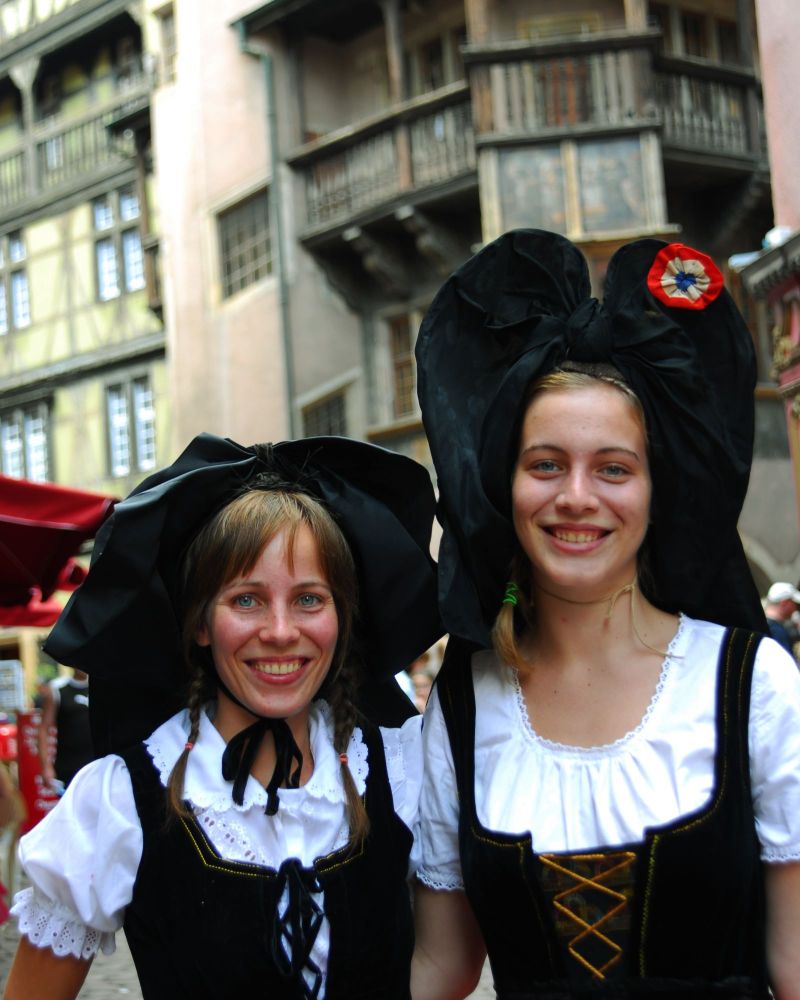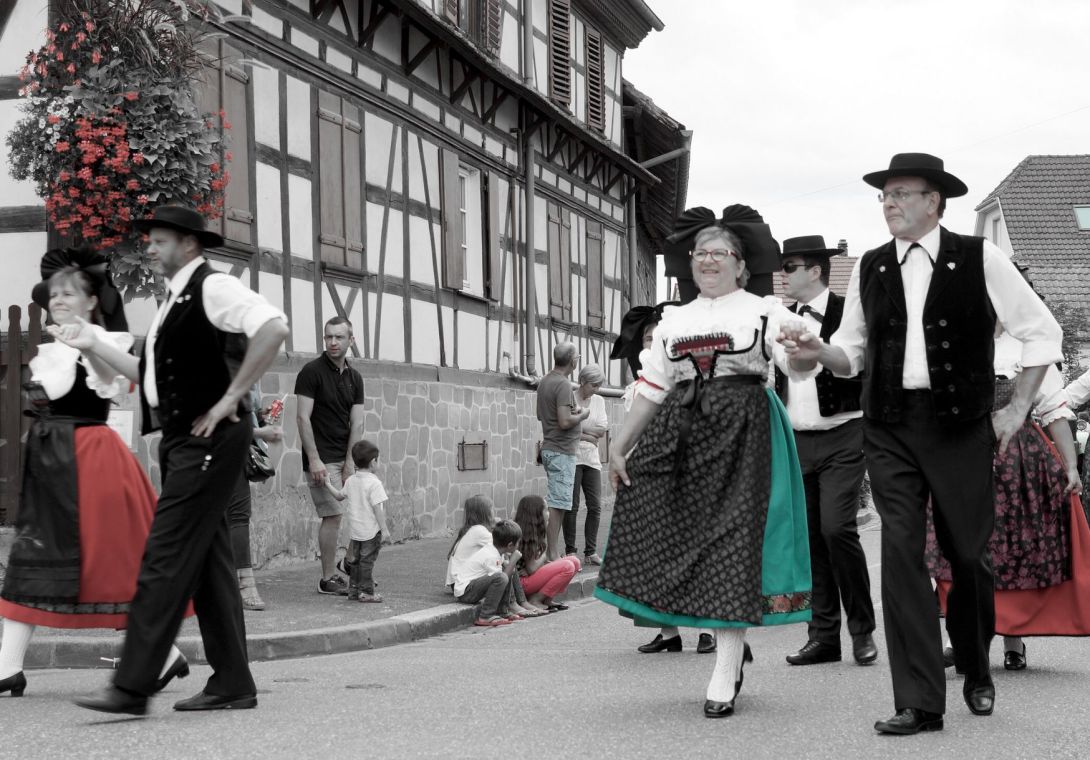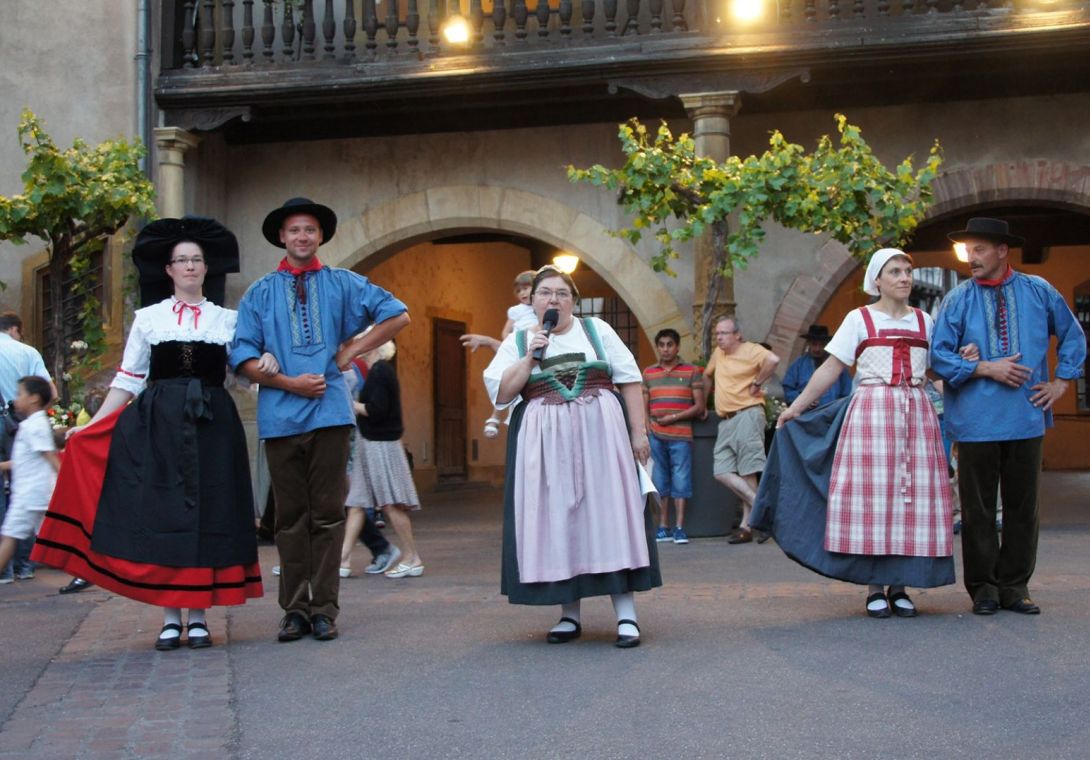
Folk Music Evenings
Colmar will move to the beat of Alsatian folk music groups.
These typical Alsatian Folk Evenings are always appreciated by the public (initiated or not). They take place in the heart of the Old Town, at the Old Customs House square, and perpetuate a hundred-year-old tradition, dating back to the 18th century.
The folk evenings ensure a warm, festive and convivial atmosphere. Not to be missed !
The Alsatian Costume
The Alsatian Costume
Elements of the prevailing fashion in the urban centres were incorporated into the rural style.
The material, colours and cut define the Alsatian costume. The straight cut and rectangular forms characterize the early period when clothes were made at home out of linen, hemp, etc., and care was taken not to waste any material.
Later, they were able to buy manufactured material. The larger pieces of material enabled them to make folds and more generous cuts. Brighter colours were chosen: bright white, brilliant red (the colour of fire and life), blue, green, purple and black were used.
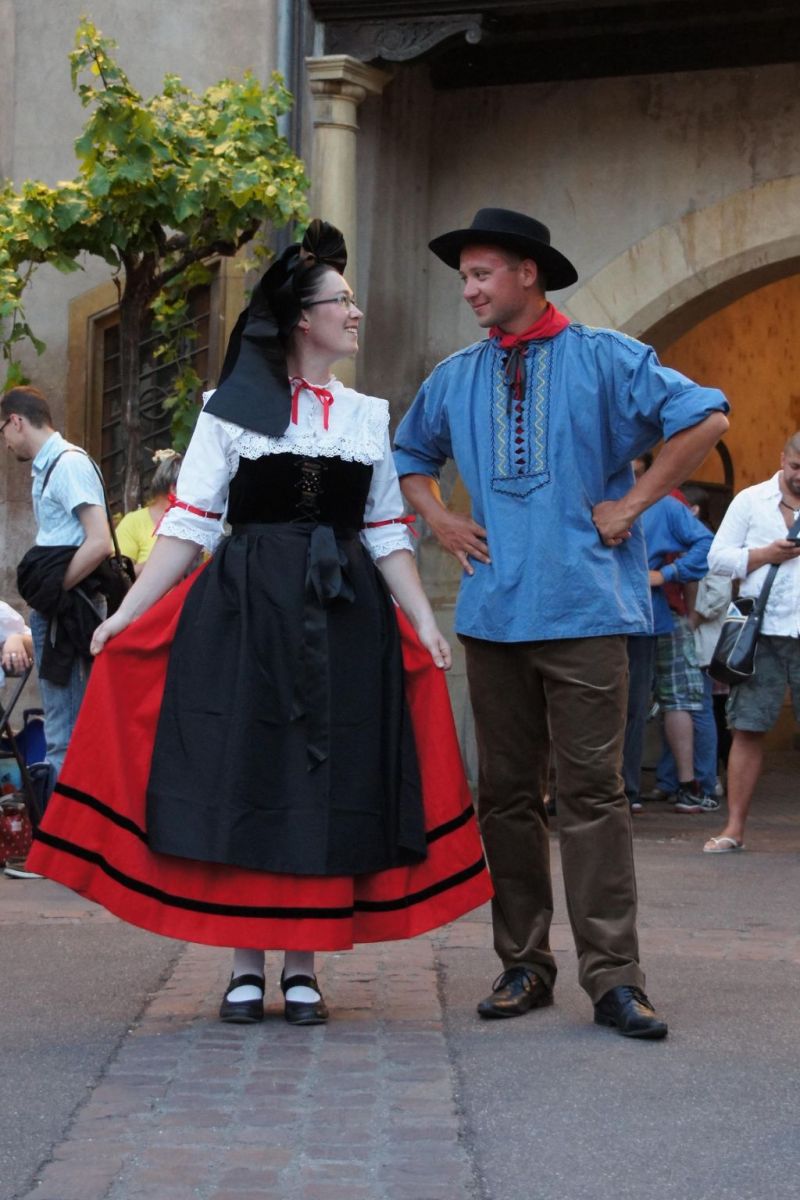
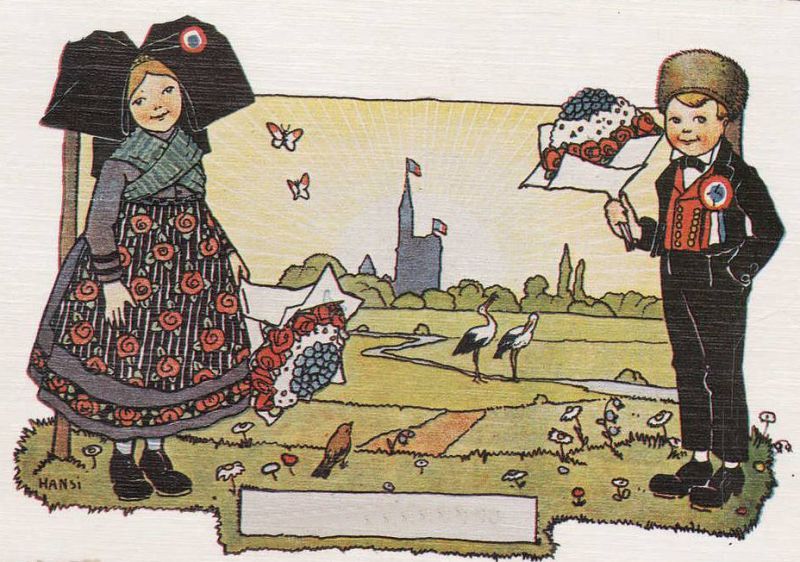
Women’s alsacian costumes:
The women’s costume consisted of a large, long-sleeved cotton blouse, a long, ample skirt covering the calves down to the ankles, a corselet attached to the skirt and a long, plain apron worn over the skirt, tightened round the waist and fastened with a big bow in the back. The shawl, often matching the apron and initially worn on the head is, at present, worn round the neck and over the shoulders. The stockings, made of wool, were crocheted or knitted. The women wore hardy, heavy dark chestnut clogs during the week, and light-couloured or painted, lightweight limewood clogs on Sundays and festive occasions.
The different elements:
The blouse
It evolved from the long linen blouse worn by peasants in the 17th century to one with a stiff collar to a soft, turned-down collar. The sleeves were long and pleated, usually tied with ribbons in the 18th century.
The collarette
Knitted or made of linen, it covered the open collar of the blouse. It had a lace-knitted border which matched the sleeve ends. The collarette has a square or rounded shape.
The skirt
Usually worn over the blouse, it is wide with many folds. Peasants wore it at mid-calf length while city dwellers wore it to the ankle. Originally two-toned (top to bottom), it was solid-coloured (green, red, purple or brown) after 1830. It was made of silk, cotton or flannel. The Protestant skirt was usually decorated with one or more flowered velvet ribbons at the bottom while the Catholics had no decoration.
The corselet
Made of fine material, it was attached to the skirt. Worn snug over the blouse, it was laced up in front, hooked at the base or knotted with a silk ribbon.
The ornamental front
Tucked into the corselet's neckline. Originally, a simple piece of red cloth to keep warm and cover the blouse´s opening, it became one of the most sumptuous elements of the costume. It is richly decorated with ribbons, flowers, colourful glass, sequins or stamped metal bits at the top where it is visible above the corselet. Seamstresses achieved true works of art decorating them with flower motifs, trees of life, solar wheels, stars, fruit cornucopia, curved motifs, rosettes, etc.
The apron
An intergral element of every Alsatian costume, it was worn over the skirt. Originally, it was made of simple white linen, but after 1870, it was made of flowery, silk, satin or taffeta. It is pleated and tightened at the waist by two ribbons that cross in the back and tie into a big knot in front. The bottom of the apron can be decorated with ribbons and lace.
The stockings
White and hand-knitted, with varying patterns.
The shoes
Flat-heeled, decorated with either a ribbon or a buckle.
The shawl
It is decorative and keeps you warm. Usually worn knotted or overlapping. It is made of silk with a long fringe, and is flowered, checked, sparkling or embroidered.
The headdress
They are typical of the Alsatian costume, and are either knotted bonnets or "beard" bonnets. Embroidered with silver and gold, with sequins and motifs, made of damask or printed cotton, decorated with small glass pieces or stones from the Rhine. Often lined with lace. Around 1830, this headdress had a frontal knot, which kept getting larger, reaching 1 metre in diameter in the 1890s. The colour of the ribbon depended on religious beliefs: black for young Protestant or married women, red and multicoloured for young Catholics.
Men’s alsacian costumes:
The men’s costume consisted of a white- and blue-striped or -checked, long-sleeved cotton shirt during the week, and a plain or many-coloured, gold-buttoned waistcoat on Sundays and festive occasions with dark or light brown, or black, corduroy trousers. The triangular-shaped red or checked scarf was worn round the neck. The wide-brimmed black felt hat was decorated with a black silk, knotted ribbon. The leggings were either crocheted or knitted, made of thick wool and the clogs were made of chestnut or lime wood, like the women’s.
The different elements:
The shirt
It evolved from the long linen shirt that farmers used to wear. The sleeves were long and pleated.
The trousers
Long trousers dethroned breeches and leggings during the Revolution. Long and narrow, made of black, blue, green or brown wool or bombazine. In some regions, they buttoned all the way down the legs.
The waistcoat
Originally a simple piece of red wool attached to the front of the shirt to keep warm, it gradually became a reversible waistcoat with many buttons. Traditionally, the waistcoat was red, but in some regions, it was black, purple or blue velvet.
The frock coat
As early as the 17th century, peasants wore the long frock coat to keep warm. Made of black, brown or blue bombazine or wool, or heavy white cotton. It was slit up to the waist in the back and was worn with breeches and leggings. Around 1830, a short, black bombazine frock came into style. It was decorated with a double row of metal buttons on the front and at the wrists.
The hat
An essential element of the male costume, there have been imany variations. From the 17th century, the large-brimmed black felt hat was standard, replacing the tri-corn. Various methods of attaching the rounded, wide brim were used, and knitted caps of varying lengths or fur caps made of skunk or sable each saw its day. The moderate-brimmed, flat-topped black felt hat became standard at the end of the 19th century.
 Visit
Visit


